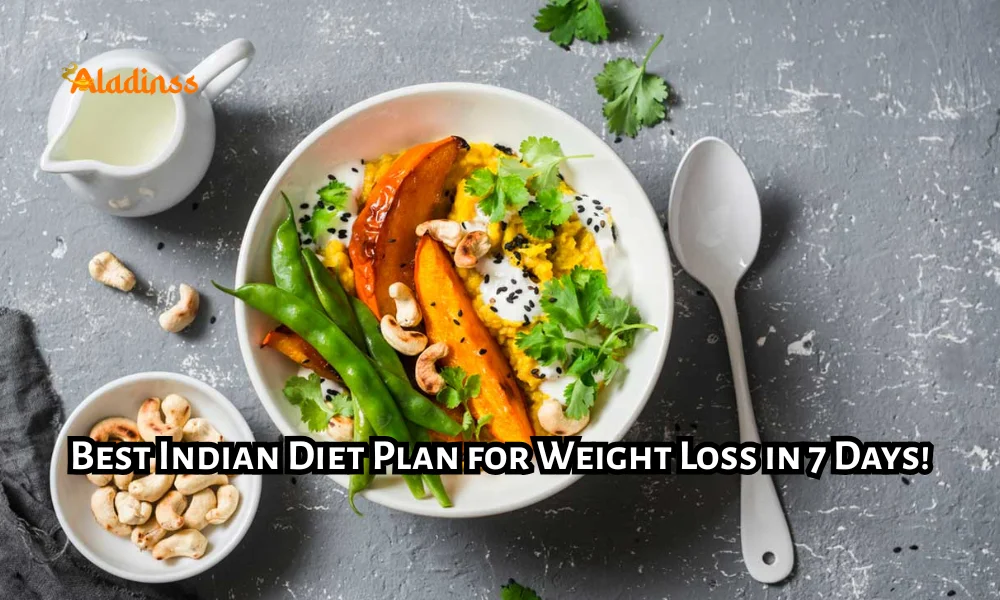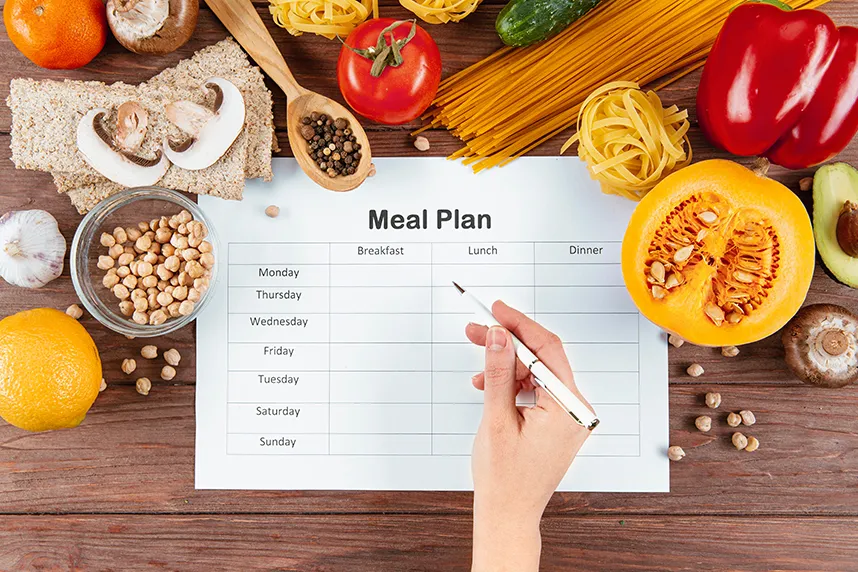Best Indian Diet Plan for Weight Loss 1200 to 1500 Calorie Meal Guide

Best Indian Diet Plan for Weight Loss (Full 1200–1500 Cal Meal Plan)
Losing weight with an Indian diet is easier than you think. The best Indian diet plan for weight loss combines familiar home-cooked meals, spices, and portion control to deliver sustainable results. This 1200–1500 calorie meal plan uses everyday ingredients like dal, roti, vegetables, and curd while keeping taste intact. You don’t need expensive supplements or gym memberships just consistency and smart food choices.
Indian cuisine is naturally rich in fiber, protein, and healthy fats from lentils, whole grains, and ghee. A well-structured Indian diet plan for weight loss taps into these strengths to create a calorie deficit without hunger pangs. Studies show that traditional Indian thali meals can promote satiety and reduce overeating when portions are controlled.

Why Indian Diet Works for Weight Loss
The secret behind the best Indian diet plan for weight loss lies in its balance of macronutrients. A typical meal includes complex carbs from millets or brown rice, protein from paneer or chickpeas, and healthy fats from nuts or coconut. Spices like turmeric, cumin, and black pepper boost metabolism and aid digestion.
Unlike fad diets, this plan avoids processed foods and focuses on seasonal vegetables and fruits. For example, replacing white rice with quinoa or foxtail millet cuts calories while increasing fiber intake. High-fiber foods keep you full longer, reducing cravings for snacks like samosas or namkeen.
Hydration plays a key role too. Start your day with jeera water or warm lemon water to kickstart metabolism. Avoid sugary chai or packaged juices. Instead, opt for buttermilk or green tea between meals.
Key Principles of the 1200–1500 Calorie Plan
This Indian weight loss diet plan follows a simple structure: three main meals and two snacks daily. Each meal stays within 300–400 calories, while snacks are capped at 150 calories. The goal is a gradual deficit of 500–700 calories per day for 0.5–1 kg weekly loss.
- Portion control: Use small plates and measure oil (max 2 tsp per person).
- Protein priority: Include 15–20g protein per meal to preserve muscle.
- Fiber focus: Aim for 25–30g fiber daily from veggies and whole grains.
- Timing matters: Eat dinner by 7:30 PM and avoid late-night snacking.
7-Day 1200–1500 Calorie Meal Plan
Day 1 (1300 Calories)
Breakfast (300 cal): 2 small moong dal cheela + 1 cup curd + 1 tsp chutney
Mid-morning (100 cal): 1 apple + 5 almonds
Lunch (400 cal): 1 cup brown rice + 1 cup dal tadka + 1 cup bhindi sabzi + salad
Evening (150 cal): Green tea + 1 khakhra
Dinner (350 cal): 2 multigrain roti + 1 cup paneer bhurji + 1 cup cucumber raita
Day 2 (1250 Calories)
Breakfast (280 cal): 1 cup vegetable poha + 1 boiled egg
Mid-morning (120 cal): Buttermilk with mint
Lunch (380 cal): 2 jowar roti + 1 cup chana masala + 1 cup mixed veg
Evening (140 cal): 1 guava + 1 tsp roasted flaxseeds
Dinner (330 cal): 1 cup veg khichdi + 1 cup curd + papad
Day 3 (1400 Calories)
Breakfast (320 cal): 2 idlis + sambar + coconut chutney
Mid-morning (130 cal): 1 pear + 6 cashews
Lunch (420 cal): 1 cup quinoa pulao + 1 cup rajma + salad
Evening (150 cal): Masala tea (no sugar) + 2 digestive biscuits
Dinner (380 cal): 2 bajra roti + 1 cup chicken curry (skinless) + 1 cup stir-fried greens
Day 4 (1280 Calories)
Breakfast (290 cal): Oats upma with veggies
Mid-morning (110 cal): 1 orange
Lunch (400 cal): 2 ragi roti + 1 cup sambar + 1 cup cabbage poriyal
Evening (130 cal): Roasted makhana (1 cup)
Dinner (350 cal): 1 cup veg soup + 1 whole wheat toast + grilled paneer
Day 5 (1350 Calories)
Breakfast (310 cal): Besan cheela + mint chutney
Mid-morning (120 cal): 1 banana
Lunch (410 cal): 1 cup millet khichdi + 1 cup curd + beetroot salad
Evening (140 cal): Green tea + 1 murmuru laddoo (small)
Dinner (370 cal): 2 small phulkas + 1 cup fish curry + 1 cup palak sabzi
Day 6 (1320 Calories)
Breakfast (300 cal): 1 cup overnight oats with fruits and chia
Mid-morning (115 cal): Carrot sticks + hummus (2 tbsp)
Lunch (390 cal): 2 methi paratha (no oil) + 1 cup dal + 1 cup lauki sabzi
Evening (145 cal): 1 cup sprouted moong salad
Dinner (370 cal): 1 cup tomato soup + 1 veg sandwich (brown bread)
Day 7 (1380 Calories)
Breakfast (330 cal): 2 small aloo paratha (less oil) + curd
Mid-morning (125 cal): 1 pomegranate
Lunch (420 cal): 1 cup veg biryani (brown rice) + raita + salad
Evening (150 cal): Herbal tea + 2 khajoor
Dinner (355 cal): 2 small dosa + sambar + chutney
Grocery List for the Week
- Whole grains: brown rice, millets, oats, whole wheat flour
- Protein: moong dal, chana, paneer, eggs, chicken, fish
- Vegetables: bhindi, lauki, palak, cabbage, carrots, beets
- Fruits: apples, guava, banana, pomegranate, orange
- Dairy: low-fat curd, buttermilk
- Spices: turmeric, cumin, coriander, garam masala
Cooking Tips to Save Calories
Use non-stick pans to minimize oil. Replace deep frying with grilling, baking, or air frying. Add flavor with herbs and lemon instead of excess salt or cream. Steam idlis and dhoklas instead of frying. Roast papads in the microwave.
Batch cook on weekends to avoid ordering in. Store chopped veggies and soaked dals to save time. Freeze portioned curries to prevent waste. Always taste food before adding extra ghee or butter.
Common Mistakes to Avoid
Skipping meals leads to overeating later. Don’t eliminate carbs entirely choose smarter sources. Avoid fruit juices; eat whole fruits instead. Don’t rely on tea-time biscuits or fried snacks. Track your intake for the first two weeks to understand portions.
How to Customize the Plan
Vegetarians can swap chicken or fish with soya chunks or tofu. For higher activity levels, add 200 calories via nuts or an extra roti. Lactose intolerant? Use coconut or almond yogurt. Pregnant or breastfeeding women should consult a doctor before starting.
Exercise Recommendations
Pair this Indian diet plan for weight loss with 30 minutes of brisk walking or yoga daily. Include strength training twice a week to boost metabolism. Stay active with household chores or dancing to burn extra calories.
Expected Results and Sustainability
Most people lose 2–4 kg in the first month with 80% diet adherence. The best Indian diet plan for weight loss is sustainable because it includes festival foods in moderation. After reaching your goal, increase calories gradually to maintain weight.
Focus on how clothes fit, energy levels, and sleep quality not just the scale. Celebrate non-food victories like completing a 5K walk or fitting into old jeans. This plan isn’t a quick fix; it’s a lifestyle shift rooted in Indian food culture.
Comment / Reply From
No comments yet. Be the first to comment!






